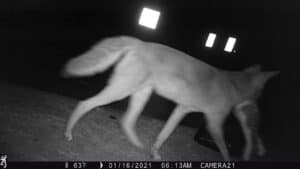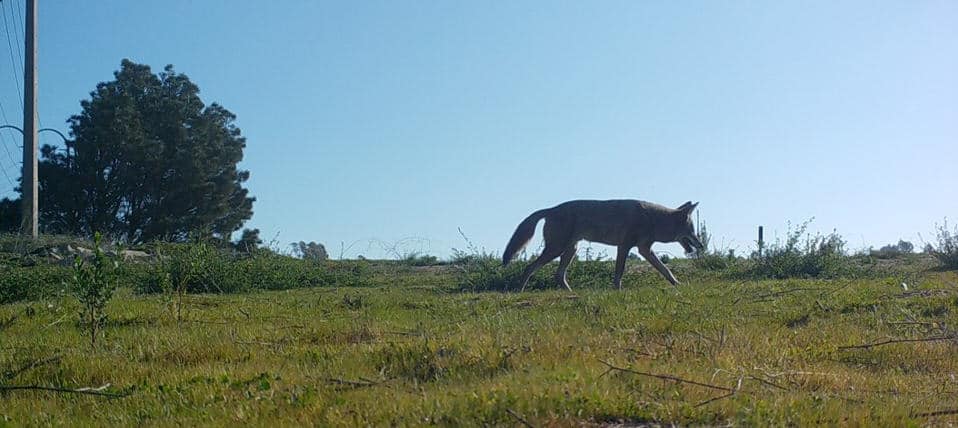Share this article
Suburban cats pay the price for slinking into coyote territory
When 72 cat deaths in a Southern California community were attributed to coyotes within 18 months, it left biologists befuddled. Past research suggested that domestic cats typically make up less than 5% of coyotes’ diet. Why did Culver City seem so different?
Wondering if coyotes were traveling into residential areas on the hunt for house cats, city officials in this Los Angeles suburb asked researchers to get to the bottom of it.
“They wanted to identify problem coyotes or locate hot spots of coyote activity to determine their points of entry and minimize future conflicts,” said lead researcher Rebecca Davenport, a master’s student at the University of Kentucky. If problem coyotes were the issue, they could come up with a plan to remove them.
Instead, Davenport’s team found, it may not be the coyotes that need to be managed. It may be the cats.

A coyote carries a domestic cat in its mouth. Credit: Davenport et al 2022
For the study published in PeerJ, the researchers took 20 remote wildlife cameras and set them up at various sites across Culver City for a six-month period. Between 2019 and 2020, they captured images from a range of green spaces, residential areas and potential wildlife corridors such as a bike path and storm drains to see which habitats coyotes (Canis latrans) were using and which ones cats (Felis catus) were using. Ignoring lots of images of quizzical onlookers and curious children, they turned to occupancy models and activity analyses to figure out where the two species overlapped.
What they found surprised them. Coyotes mostly used urban green space, particularly more natural areas. That wasn’t unusual. Past research found much the same thing, Davenport said. What surprised them was the behavior of the cats. They appeared all across Culver City—in 18 out of the 20 sites they studied.
“Not only were they present in residential spaces, but they were also present in green spaces that coyotes were primarily using as habitat,” Davenport said. That was particularly surprising, she said, since past research has shown that cats generally remain closer to residential areas.

Pet owners who let their cats outdoors in Culver City put them at risk for coyote predation. Credit: Davenport et al 2022
Davenport suspects Culver City’s cats may be so abundant that they’re occupying a wider range of niches. Unowned cats may wander even farther from neighborhoods into the green spaces coyotes prefer.
The team concluded that managing coyotes may not be as effective as the government hoped, since the cats were the ones encroaching on coyote territory. Instead, the answer may lie in informing pet owners about keeping their cats indoors, and maybe more city restrictions, Davenport said. That could also help address other problems that cats pose.
“Domestic cats are harmful to the environment,” she said. “There are countless studies across the globe that have shown they’re a threat to songbirds and small mammals.”
Header Image: Coyotes share urban green spaces with domestic cats in Culver City, California. Credit: Davenport et al 2022








